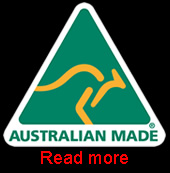ViralFX™ Environmental Safety & Biodegradability

The effect of any chemical system on the environment is measured by evaluating Eco-Toxicity and Biodegradability. Given below are the lab analysis findings of ViralFX™ safety.
Eco Toxicity
Eco-toxicity is the effect of harmful substances on the performance of Sewerage Treatment Facilities. ViralFX™ is nontoxic to anaerobic sludge and does not pose a threat to sewerage treatment facilities.
Soil Toxicity
ViralFX™ shows low toxicity to earthworms and can be described as being non-toxic according to EU guidelines.
Freshwater Toxicity
All water control quality (pH, dissolved oxygen, temperature and hardness) were within acceptable test boundaries (as per Daphnia tests). ViralFX™ being a concentrated disinfectant is classified as toxic on a scale of non-toxic, toxic and very toxic. Standard Quaternary Ammonium Compounds are classified as very toxic which are actually 6.5 times more toxic than ViralFX™
Biodegradability
ViralFX™ is an oxygen based disinfectant, containing simple inorganic salts and organic acids which decompose into harmless metabolites in the process of bio-degradation. The active substance in ViralFX™ is Potassium peroxy monosulphate triple salts. This is an inorganic oxidant that degrades in the environment to potassium and sulphate ions. The surfactant is a salt of straight chain alkyl benzene sulphonate complying with EU directive 82/243. In total about three quarters of the components of ViralFX™ are inorganic. The other one quarter of organic components of ViralFX™ are classified as readily biodegradable according to OECD and EU tests standards. The environmental degradation profile of each material component is within natural systems is summarised below. ViralFX™ is an environmentally friendly and bio-degradable disinfectant compared to many other alternative products.
Potassium Peroxomonosulphate Triple Salts
This is an active substance in ViralFX™. This is an inorganic oxidant that degrades in the environment by a variety of routes. As a peroxygen compound it will undergo catalytic decomposition by iron and other transition metal salts present naturally in waters to form innocuous products - potassium sulphate and oxygen. Heterogeneous catalytic decomposition on clay and other particles in soil or sediment may also occur.
Sodium Dodecyl Benzene Sulphonate
This is an organic anionic surfactant compound, used extensively in household detergent products. 94% of these products are readily biodegradable dissolved organic carbon as per OECD guidelines 301 & 303 tests. Also this material component meets BOD5/COD = < 0.005 tests as per DIN 38H03, Teil1 tests. It’s therefore considered as readily degradable.
Sodium Hexametaphosphate
Sodium hexametaphosphate is an inorganic substance which hydrolyses in receiving waters to form orthophosphate, which may act as a plant nutrient.
Sodium Chloride
This substance is naturally present and omnipresent within the environment.
Sulphamic Acid
This is an organic substance, which is soluble in water and slowly hydrolyses to form sulphates of ammonia. Test methods available for determination of degradability are typically designed to assess organic chemistry. Many of the tests are therefore not appropriate for organic substances.
Hydroxybutanedioic Acid
Hydroxybutanedioic acid is a naturally occurring substance, present in many fruits. It is also permitted for use as a feed additive for use as a flavouring agent, flavour enhancer and acidulent. It is an intermediate in both the KREB and glyoxalate in the production of energy and carbon skeletons for the formation of amino acids.
Therefore, Hydroxy-butanedioic acid will rapidly degrade within the environment by an abundance of readily available organisms.
ViralFX™ is a safe disinfectant.
Peter Keys, B.Sc
Chemist







